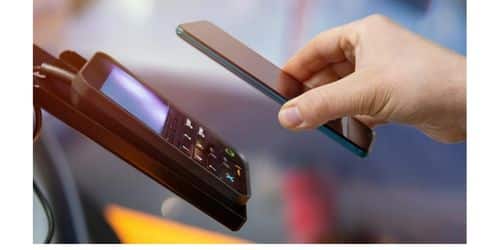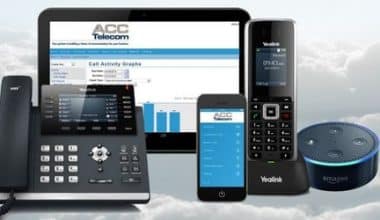A POS is used whenever you use your credit card to pay for goods at a store. There are numerous varieties of POS hardware, but they all allow a vendor to withdraw payments from your credit card or another form of payment. You will need to invest in POS gear if you intend to collect payments in person. This article explains what pos terminal means, types, price, square pos terminal, and Android pos terminal.
POS Terminal
A point-of-sale, or POS, terminal is a piece of hardware that lets merchants take payments and finish a sale. The best example is a cash register. Modern POS terminals, on the other hand, can be anything from a smartphone with a card reader plugged into a countertop terminal that can print receipts, scan bar codes, and do more.
POS terminals are part of your point-of-sale system, which is made up of all the hardware and software you need to run your business. The best POS systems can do more for your business than just take payments. For example, they can help you manage your inventory and your employees.
How a Point-Of-Sale Terminal (POS) Works
When a credit card or debit card is used to pay for something, a standard point-of-sale (POS) terminal first reads the magnetic strip to see if there are enough funds to transfer to the merchant and then makes the transfer. The sale is written down, and the buyer can get a receipt in the mail, by email, or by text message. A POS terminal can be bought or rented by a business owner, depending on how they like to handle their cash flow. Buying a system has higher upfront costs, while leasing has more stable monthly payments. However, the total lease payments may end up being more than a one-time purchase over the useful life of the system.
The current trend is toward software-based POS systems that can be installed into a tablet or other mobile device, rather than traditional proprietary hardware. To stay ahead of the curve, POS terminal makers are making their own versions of portable and mobile POS devices.
These kinds of devices can be found in busy stores and restaurants where the owners know that customers don’t like to wait around to pay for an item or meal. When buying a POS system, price, function, and ease of use are all important factors. The security of the systems is crucial in today’s increasingly interconnected society. Some well-known hacks of customer information have happened through POS terminals that didn’t have operating systems that were up to date.
Android POS Terminal
An Android POS machine is a card terminal with a touch screen that runs on the Android operating system. Android is an open software system that Google made. Most smartphones that are not iPhones use Android. Android terminals can connect to different ways to pay and add-on apps like point-of-sale (POS) software.
An Android POS terminal can be used in any business, no matter what it is. The retail, hospitality, travel, and beauty industries can all benefit from the use of fast and efficient Android POS terminals.
The best thing about an Android POS system is that it can be used in two different ways. In this way, Android technology makes sure that the performance of the business is greatly improved both in the store and on the web store.
Benefits of Android POS Terminal
First of all, it’s good to know that an Android POS Terminal device can have more than one function. In terms of running the store, you can do the following from your smartphone or tablet:
- The customer database
- Availability of inventory
- Number of orders and items sold
- Discounts and vouchers
- Stock values
- Employees management
- Sale operations
All of this information can be provided at the end of the business day or in real-time. Since the Android POS terminal is a cloud-based system, data backups make it possible to check on the business’s performance on a daily, weekly, monthly, or yearly schedule that you choose. For this purpose, it is possible to integrate the Android POS terminal with the current POS software as effectively as possible.
Graphs or written reports can be used to show how well the store management is doing. The Android POS system can also be used by more than one person at more than one location. You can sync up a lot of mobile devices, so you can check all of the above features on different devices.
Android POS Hardware
Android POS hardware can include several devices that can be added to a wireless network, such as:
- Receipt printers
- Barcode scanners
- Customer monitor
- Credit card terminals (EMV chip or magstripe)
- Cash drawer
Square POS Terminal
The Square POS Terminal is a card processing device that has everything you need in one place. It is made to be fast, fair, and safe. With Square POS Terminal, you can quickly accept all forms of payment, ring up sales, and print receipts from a single, inexpensive, and stylish device. You can use Square POS Terminal with your own point-of-sale system, or you can use it on its own as a payment processor and enter transactions by hand.
The following are the advantages of Square POS Terminal:
#1. Elegant Design
Square Terminal has a sleek, one-of-a-kind look that makes any business look more professional.
#2. Reliability
With an all-day battery, Wi-Fi and Ethernet internet connections, and Offline Mode, you’ll never miss a transaction, whether you’re accepting payments at the counter or bringing the terminal directly to your clients’ hands.
#3. Transparent and Fair Pricing
Pay a low, fair transaction rate of 2.6% + 10 for every dip, tap, or swipe payment, no matter what kind of card it is, and there are no hidden fees. There are no hidden charges or prolonged contracts.
#4. Support
Get phone support 24 hours a day, 7 days a week, and a one-year warranty. You can also try Terminal risk-free for 30 days.
#5. Quick to Set Up
The square POS terminal is easy to set up and train your employees because of how well thought out the design is.
#6. Connects to Any POS
Creates a way for Square POS Terminal and any point of sale to work together.
#7. Secure
The flat processing rate covers the security of data, the handling of disputes, and the prevention of fraud.
POS Terminal Types
There are mainly four types of POS terminals:
- Legacy Software [On-Site Server]
- Cloud Computing Terminals
- Mobile Terminals
- Self-service Terminals
Knowing what the types of POS terminal has to offer will help you choose the right one for your business.
#1. Legacy Software (On-Site Server)
This technology is in stores and needs a server that is also in the store. When a transaction is done, employees use the system with the client. This system is often used in places where there are a lot of people, like grocery stores, restaurants, etc. Among all the types of POS terminals, the Legacy software terminal is useful because it is easy to use and gets things done quickly. However, there are a number of disadvantages to using legacy software and having an on-site server:
Expensive: Installing a server can be expensive for a business, and it can cost even more if the business has more than one store.
Limited access: You must be physically present in the store in order to assess store data. Owners of store networks can also have trouble with this.
Lack of support: It is usually harder to get help when something goes wrong.
Security: If something like a fire or flood happens, you may lose your data because you didn’t store it anywhere else. Also, you don’t have access to regular updates that could help make sure operations go smoothly.
#2. Cloud Computing Terminals
A cloud computing terminal is the most modern POS system you can get. Your server is taken care of by your supplier, so you don’t need to put one in your store. If there is a problem with the system, the provider will fix it for you. You’ll have more time to run your business instead of taking care of your server and making backups by hand
Also, the data is safe and one can look it up anywhere, at any time. Among all the types of POS terminals, a cloud computing terminal is helpful for people who own more than one store because they can check all of their inventory and sales reports in one place.
There are many benefits to using cloud technology:
- Available everywhere: You may access your data from any location with an Internet connection.
- Affordable: Often given as SaaS (software as a service), the price is frequently low due to the several pricing levels offered by your vendor.
- Regular updates: The provider is responsible for continually updating and enhancing the software. The result is an optimized version of your software.
- Support: Many providers of cloud-based point-of-sale systems offer 24/7 assistance.
- Easy to use: This software is frequently utilized due to its user-friendliness and data accessibility. It is also beneficial if you intend to expand and open new stores.
#3. Mobile Terminals (mPOS)
A mobile terminal, often known as mPOS (mobile point of sale), is a point-of-sale system that operates on a smartphone or tablet. A credit card or debit card reader is used to do business. Any mobile device can be a point-of-sale system by downloading an app that lets you do transactions on the go.
Mobile terminals are a good option for small businesses that don’t have a lot of money to spend on their point-of-sale system at first. To complete transactions and get to your point of sale, all you need is an Internet connection and a mobile device. Among other types of POS terminals, mobile terminal saves money because you don’t have to buy old software for each of your stores.
This type of terminal has many benefits:
- Available everywhere: With cloud computing technology, this mobile point-of-sale terminal lets you look at your data from anywhere.
- Cost reduction: This kind of point-of-sale terminal is not too expensive, so even small businesses can get one.
This type of terminal also has a few drawbacks:
- Incomplete: Most of the time, this type of terminal is free or cheap, but it lacks certain features, and it doesn’t give the user a great experience.
- Less safe: Mobile devices are more likely to be hacked, so you need to check the security of your devices and mobile apps before putting them to use in your business.
#4. Self-service Terminals
In the event of a self-service terminal, the client purchases a product or service independently. Companies with a large customer base that must conduct transactions quickly may wish to acquire this type of terminal. Among all the types of POS terminals, the self-service terminal is interesting for grocery stores, movie theaters, and fast food restaurants, for example, although it may not be suitable for all businesses.
This type of terminal is effective for many reasons:
- Reduce waiting time: When customers use self-service kiosks, they spend less time waiting in line at the cash desks.
- Improved productivity: Employees can focus on other tasks in the company without affecting service.
- Increase revenue: Sales go up when there are self-service terminals. It was found that when people use those terminals, they spend 30% more.
- Personalized purchases: Some companies can let their customers customize the products they buy. This makes the company better off.
POS Terminal Price
The price of POS terminals is $29-100 per month for small businesses with one register, while larger enterprises and franchisees will need to double that figure by the number of additional registers required. When you add in the price of the hardware for the first time, POS systems can easily cost between $1,200 and $6,500 for the first year and between $600 and $1,200 for each year after that.
Different POS providers have different prices. Some companies provide free subscriptions, paid subscriptions with more sophisticated capabilities, or tailored pricing on an individual basis. If the POS provider has payment processing built in, they may also charge a fee per transaction.
Transaction fees are a key variable price that you should be aware of. Some POS systems that process payments automatically charge a percentage, a flat rate, or a combination of both. Your monthly costs will change based on the types of payments you accept and how many transactions you run through your POS system.
What Does a POS Terminal Do?
POS is just an abbreviation for “Point of Sale,” which is where transactions happen. Your POS machine, also called a POS system or POS terminal, is the device that customers use to pay for their purchases and add up the total.
What Is POS Terminal in Banking?
A PoS (point of sale) machine is an electronic device that allows a customer to pay a merchant for goods or services with a debit, credit, or prepaid card or by scanning a QR code. For a successful transaction, the merchant may give a printed receipt or an e-receipt.
What Is an Example of POS Terminal?
A cash register is an example of a well-known POS system. Modern POS systems consist of both hardware and software. They usually have a barcode scanner, a card reader, a cash drawer, and a printer for receipts.
How Much Does a POS Terminal Machine Cost?
For cloud-based systems, the price of POS software can range from $0 to more than $200 per month. For legacy systems, the cost is a one-time fee that starts at around $1000. A simple card reader costs nothing, but a full retail register can cost more than $1200.
What Are 5 Types of POS Systems?
5 Common Types of POS terminal
- The traditional POS system. Restaurants often use the traditional register-based POS system.
- Touchscreen POS System. Touchscreen POS systems are another type of restaurant POS system.
- Mobile Restaurant POS System
- Dedicated Server POS System
- Cloud-Based Restaurant POS System.
References
- Nerdwallet
- Investopedia
- Squareup
- Alicepos
- Shopify
Related Articles
- Financial Capital: Overview, Sources, Examples, Types (+free tips)
- Bar Management Software: Top Best 9+ Bar & POS Options in 2023
- AI VS MACHINE LEARNING: What Are the Key Differences
- EDUCATIONAL TECHNOLOGY: Definition & All You Need To Know
- CASH REGISTER: 10 Best Cash Registers (+ Alternatives to Cash Registers)
- WHAT IS STARLINK: How It Work & All You Should Know






